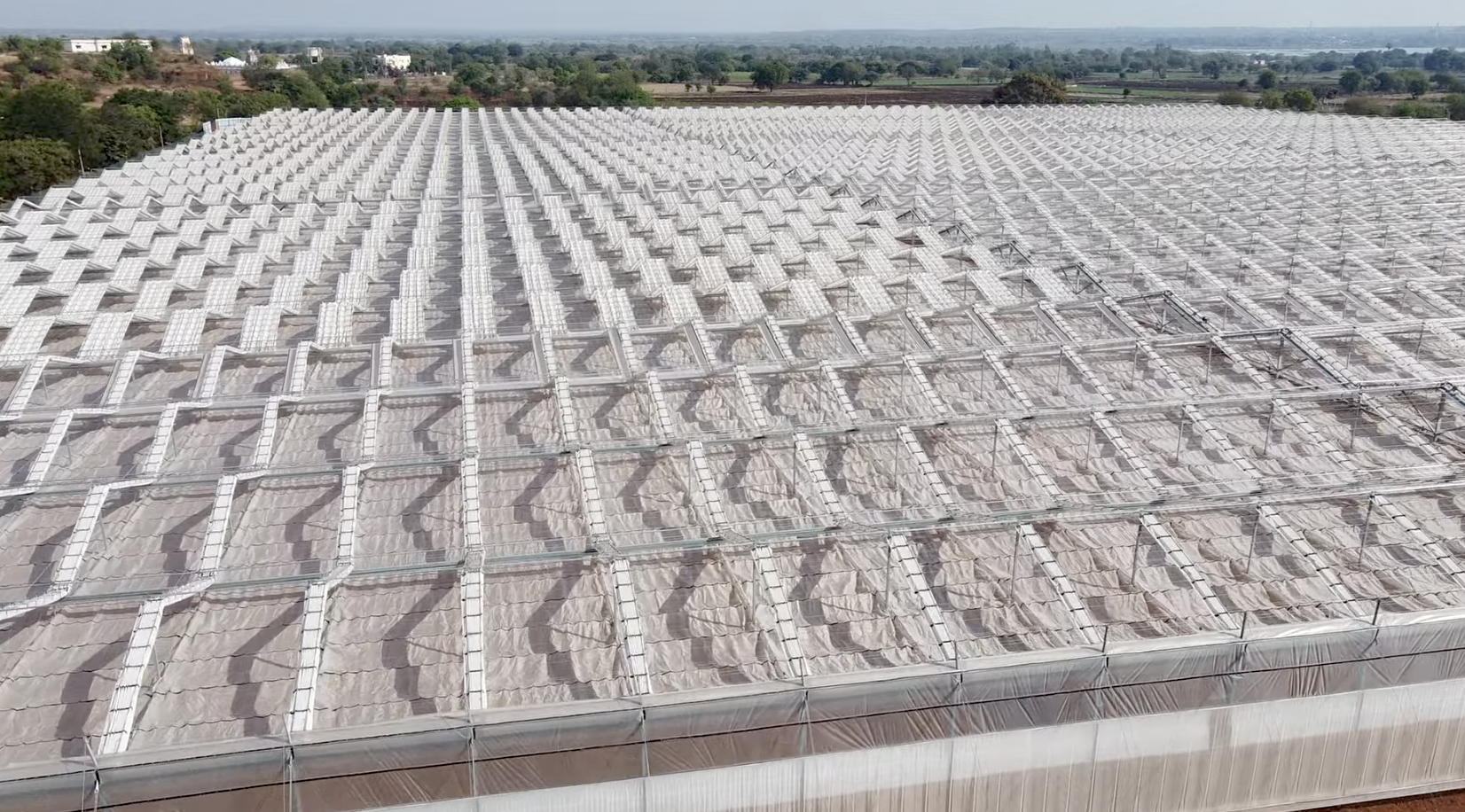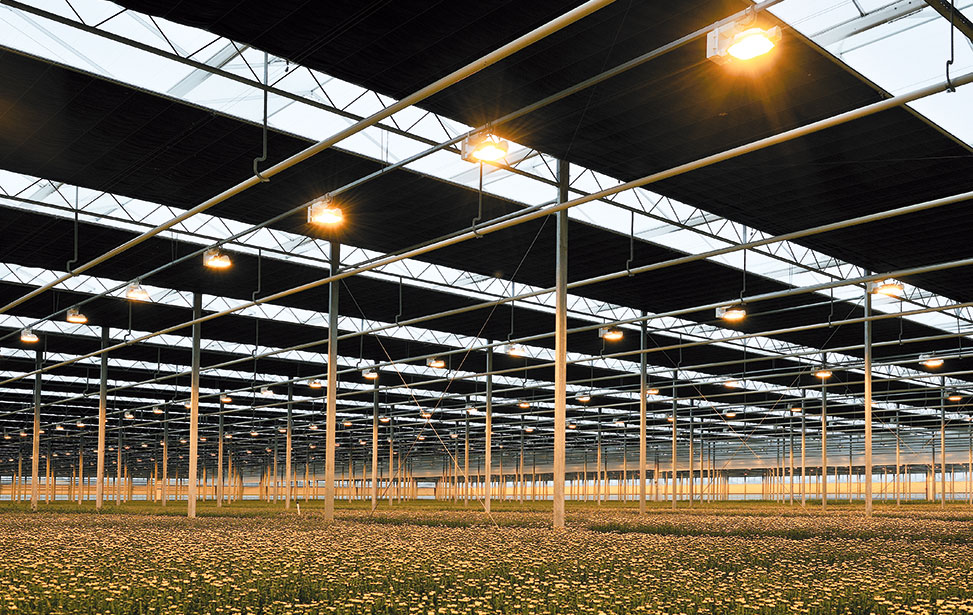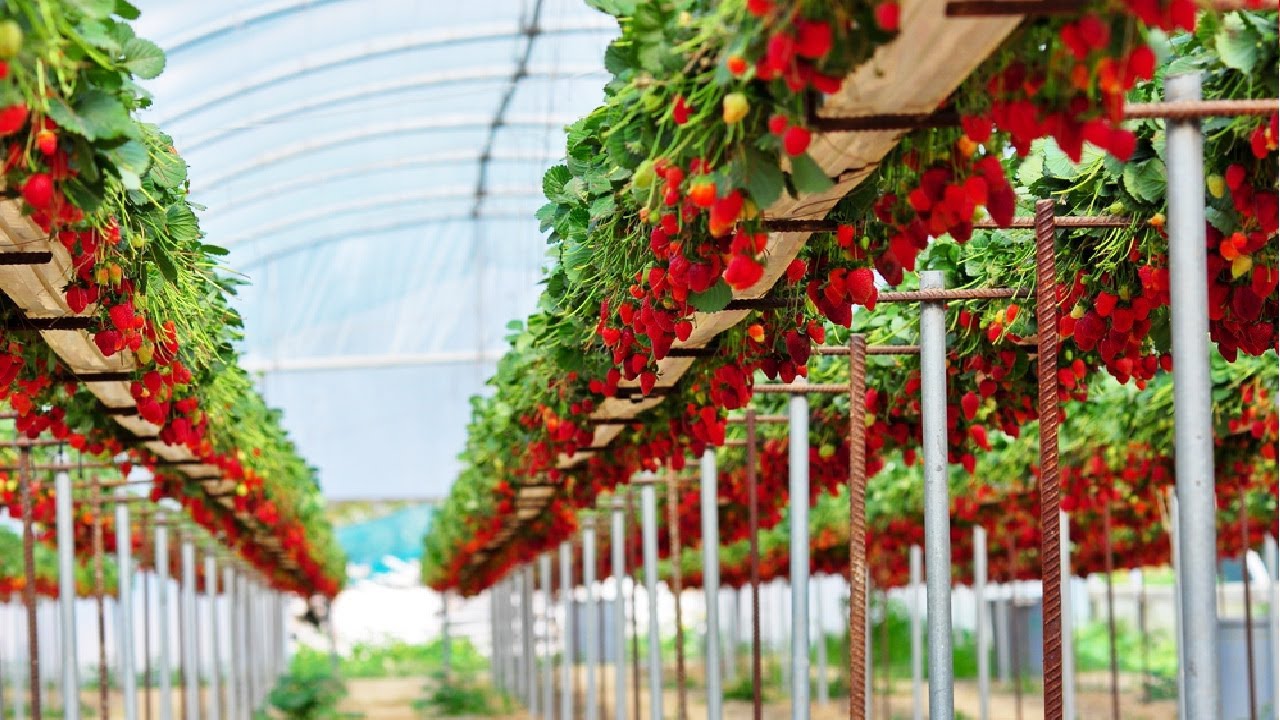Building greenhouses in India presents a unique challenge, more so than in the US or Europe, states Shrihari, co-founder of Triangle Farms, who is currently realising their first greenhouse dream in the Indian city of Hyderabad. He explains that the Indian subcontinent’s seasonal variations can be classified into six seasons.
“The growing system you build has to take into account this strong fluctuation, which makes it a costly industry.” To successfully build and operate Greenhouses in India, they feel the most important person is the MIS specialist (data specialist) from the finance department. “He will make necessary calculations and help take informed decisions at every stage of the project.”
The new facility
Advanced greenhouse systems
Triangle Farms was founded three years ago by Kamal Kanchala, Srihari Chennai and Mohan Urs, now COO of the company. During a visit to the Netherlands almost 12 years ago, Mohan saw the advanced greenhouse systems there and some years later he decided to leave the IT and banking industry for agriculture. “I knew we wanted to bring this to India,” he says. “But Indian greenhouses have been failing and many were shut down in recent years as capital costs are high and so are the operating expenses.”
“Before we started the project, we wanted to know why many greenhouses failed in India, to avoid making the same mistakes,” Srihari adds. “We factored all those things when we started designing our system. We searched for the right technology for our situation. Not necessarily high-tech, but the right, most efficient technology that suited the region best and was cost effective.”
Starting with nethouses
To learn more, they started growing vegetables hydroponically in 4 acres specially designed nethouses and sell them to the market, to learn and see how customers receive their products and what the market demands. “India is a cost-conscious market, but Covid has made them also more health conscious too. So Hari sees an opportunity here to sell greenhouse grown top quality vegetables to domestic buyers in India. But still, we’re growing a premium product and if nobody buys it, there is no use to our work.” Financial stability was also the reason why bell peppers were chosen as main crop. “The price fluctuation for bell peppers is much more stable than the market for tomatoes.”
Propagation currently takes place in the nethouse facility
Current pepper production in the nethouse
Not high-tech, but right-tech
Ever since they have worked on the design and the realisation of their high tech greenhouse. In this process, economic efficiency has proven essential to the team. “Everything has to make economic sense. Technology is one thing, but how can me make it work for India?” Mohan states. “That is also why our finance controller is the most important person in the organization. For every 10 dollars we spend, he checks whether it makes sense on a daily basis and on a long term. That is how we spend our investments. If something doesn’t work, we look at each component to get the price down.”
Their research resulted in the choice for a Cravo greenhouse, which is characterised by a retractable roof and retractable sidewalls. “The best greenhouse for our climatic conditions in India,” Hari says.
“Throughout the year we’re dealing with six different climates: the spring (Vasant Rutu), the Summer (Grishma Rutu), Monsoon (Varsha Rutu), Autumn (Sharad Rutu), Pre-winter (Hemant Rutu) and Winter (Shishir or Shita Rutu), and climatic conditions vary strongly over these different seasons, lasting 2 months each and sometimes even every day. Cravo retractable roof systems, with their 40+ years of research and backup can adapt to varying climatic conditions on a daily basis. Cravo CEO Richard showed us that with the retractable system, we can grow throughout the year and create that optimal condition for the plants to produce its best yield and quality. It wouldn’t make sense to reinvent a system like this when it is available off the shelf,” says Kamal. “It’s a brilliant structure that blends in with nature. We’ve optimised growing in our nethouses and this can only get better with the Cravo system.”
Yet, a system like this is expensive, of course – or at least more capital intensive than a nethouse. “To keep costs at their lowest, we executed the Cravo erection ourselves,” says Hari, “remotely instructed by Cravo team sitting in Ontario, Canada.”
Own team
For this reason, the company hired their own architect, civil and electrical engineers. “When fully commissioned, this project will be hiring up to a hundred people from around the villages that we’re located. From the contractors to the guys levelling the land, the machinery like earth movers, tractors etc are all locally rented out, thus saving up to 40% cost for the company and at the same time the local villagers will be able to earn good money for otherwise sparingly used machinery,” says Hari.
As steel is getting more expensive, they decided to build the construction from pre-fabricated concrete structures for their support houses, like the storage room, fertigation room etc.
“It was a long way, but now we have developed our own expertise for executing such projects end to end. We are aware of every aspect of our workflow, which allows us to be more cost-efficient. Now we are expecting the shell to be ready by the end of February 2021. We hope to harvest our first yield by the end of May.”
DIY Mentality
The DIY mentality doesn’t stop at the construction of the greenhouse. “We did many experiments to optimize the seed varieties, fertilizers and so on,” the entrepreneurs say. Using water filters to recycle the used water was another way to save money. “And Mohan designed the irrigation and fertigation system himself, as he was not satisfied with the ones they tried earlier. He used the expertise from the vendor, but made it an Indian version.
“It’s a specific market that we operate in and in other countries there might be a higher level of experienced people available, but we have to educate our own people and create systems and software that are easily available and understandable for the people in our organisation. We are also giving finishing touches to our own cultivation management software, a cloud based software that can be operated using smart phones and laptops alike.”
Bringing technology to India
In the future, the team hopes not only to build a successful company but also to bring high-tech hydroponic cultivation to India. “Whilst labor shortage is often seen as one of the biggest challenges facing the horticulture sector, Triangle Farms has no problems with finding the right staff.
As Mohan explains: “The biggest component is human involvement: people can make the project a success or a failure. In Europe, there is more skilled knowledge labour force available, but not in this region. So we hired a great number of people and upskilled them ourselves as per our requirement. This way we will never struggle with labor shortages. India has a massive young workforce, so we better make use of that. Creating jobs is very important to us, so automation is not a priority.”
“Even though investors believe in fully automated horticulture systems, that’s a big NO for us. We are balancing automation with people and have to give people jobs,” Mohan concludes. “This way we see opportunities for horticulture in India, for the industry as a whole. That is why even as investors, we’re listening to the accountants. We want to prove to people that high-tech horticulture is possible in India but need to be very cautious about cost overruns, thus making it affordable and can sure be successful.”
For more information:
Triangle Farms
Hyderabad
Triangle Farms Pvt Shaikpet,
https://www.marblebytriangle.com/
LinkedIn updates










